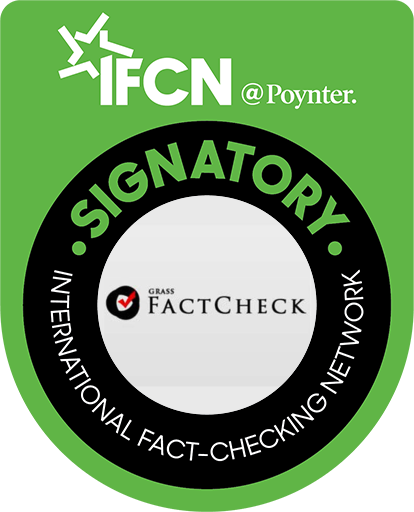Resume: In terms of status, employed individuals are divided into two categories: those hired and those self-employed. In 2018, it was the first time when in terms of the employment status, the number of the self-employed was less as compared to hired employees. In the last year, the share of self-employment in the total employment constituted 49.79%. Of further note is that in the last years, the share of self-employment has been inclined to decrease whilst the amount the self-employed dropped by 11.37% in the last five years; that is, by 107,000. In the same period, the number of hired employees increased by 23.99%; that is, by 166,400. Therefore, in the last five we do not have a 20% reduction in self-employment as stressed in the statement. In addition, in the second quarter of 2019, the 2018 trend was changed and the share of hired employment in the total employment decreased to 50.16% which is related to the growth of self-employment by 21,100 individuals as compared to the same period of the previous year.
In the total distribution by employment status, the growth of hired employment affects the share of self-employment in the total employment which is referred to in the Prime Minister’s statement. In turn, both the private and public sectors contribute to the growth of hired employment. In the last five years, employment (hired employment) in the public sector increased by 47,700 (18.92%). Therefore, the public sector was the principal contributor to the growth of hired employment. In total, in the last five years, the amount of employees increased by 50,800 and the greater part of this figure is associated with growth in the public sector.
Analysis
During the parliamentary hearings in the capacity of the candidate for Prime Minister of Georgia, Giorgi Gakharia spoke about employment. As stated by Mr Gakharia: “This is the first year when the amount of the self-employed is less than those officially employed. The amount of officially employed people was 51% for the first time in 2018 which means that 49% of the total employment was self-employment. The amount of self-employment has decreased by 20% in the last five years. I would like to say this is the main and one of the most important achievements and this is what has to be continued.” In the aforementioned statement, Mr Gakharia emphasises the decrease in self-employment and stresses the mobility of the self-employed to hired employment. The candidate for the Prime Minister also named the latter as an important achievement in the labour market in the past years.
A working-age person is considered employed if he was employed (even for one hour) during a seven-day period prior to the National Statistics Office of Georgia’s survey to receive income, assisted other members of a domestic household for free or for some reason was absent from the workplace although formally registered as an employee. In turn, in terms of status, employed individuals are divided into two categories: those hired and those self-employed. A hired employee is an individual who worked in a reporting period to receive salary or other compensation (monetary or in-kind) whilst a self-employed person is an individual who owns property and works on his property for profit or family income (monetary or in-kind form) as well as an individual who works in a domestic household for free. In addition, an employer of a working-age person is the state (public) or the non-state (private) sector. Persons who work in state, autonomous republic and local self-government bodies or in organisations funded or/and founded/controlled by the aforementioned bodies as well as in state/municipal enterprises are considered to be employed in the public sector. All those employees who do not work in the public sector are considered to be employed in the private sector. Of note is that all of those individuals employed in the public sector have the status of hired employees.
The amount of employed persons in the second quarter of 2019 amounted to 1,717,200. Of that amount, 50.16%; that is, 861,300 have a hired employee status whilst 49.79%; that is, 855,100, are self-employed. These figures have been changed as compared to the same period of the previous year. In particular, as compared to the second quarter of 2018, the share of hired employment in the total employment decreased by 1.13 percentage points whilst the share of self-employment increased by 1.1 percentage points.[1] In regard to 2018, historically this was the first year when the amount of hired employees exceeded the amount of self-employees. In accordance with the annual figures of 2018, 50.77% of the total number of employees had a hired employee status whilst 49.19% had a self-employee status.
Graph 1: Distribution of Employment in Terms of Status

Source: National Statistics Office of Georgia
In the first two quarters of 2019 the share of self-employment increased in the total employment, albeit slightly. In the second quarter of 2019 as compared to the second quarter of 2018, the amount of self-employees increased by 21,100 whilst in the same period the amount of hired employees dropped by 16,900. Therefore, in the course of this year, the 2018 trend has been altered in an opposite direction.
Graph 2: Amount of Employees in Terms of Status (Thousand Persons)

Source: National Statistics Office of Georgia
In the last five years, the amount the self-employed dropped by 11.37%; that is, by 107,000, whilst the number of hired employees increased by 23.99%; that is, by 166,400. Of note is that the self-employed are not keen to perceive themselves as having employment and compete with the unemployed to find a job. Therefore, the self-employed move into hired employment.
As mentioned previously, all employees in the public sector have a hired employee status. Therefore, of interest is to have a look at the contribution of the public sector to the growth of hired employment in the Prime Minister‘s timeframe. In the last five years, employment (hired employment) in the public sector increased by 47,700 (18.92%). In 2018, the amount of public sector employees amounted to 299,800 whilst this figure was 252,100 in 2013. Therefore, the growth of employment in the public sector contributes to the mobility of the self-employed to hired employment and to the reduction of the share of self-employment in the total employment.
Graph 3: Employment in the Public Sector (Thousand Persons, %)

Source: National Statistics Office of Georgia
In the second quarter of 2019, the number of hired employees was 1,717,200 which constitutes 56.4% of the working-age population of the same period. Of note is that since 2015, the employment rate has decreased. Therefore, the share of employment in the working-age population has dropped. In turn, the amount of employees in the last five years has increased by 50,800 (3.09%).
Graph 4: Employment and Employment Rate (Thousand Persons, %)

Source: National Statistics Office of Georgia
Of additional note is that as compared to the first two quarters of 2018, there is a slight growth of employment in the first half of 2019. In particular, in the first quarter of 2019, the share of employees in the working-age population increased by 0.79 of a percentage point and in the second quarter growth constituted 0.18 of a percentage point.
[1] The total sum of the percentage amount of both hired employment and self-employment does not constitute 100% because there are types of employment where the status is unclear.

![This [2018] is the first year when the amount of the self-employed is 1% less as compared to those officially employed… The amount of the self-employed has dropped by 20% in the last five years](https://www.factcheck.ge/storage/files/320x180/b2d5f8a0-eb46-11e9-8487-4fe0b185c6fc.jpg)






